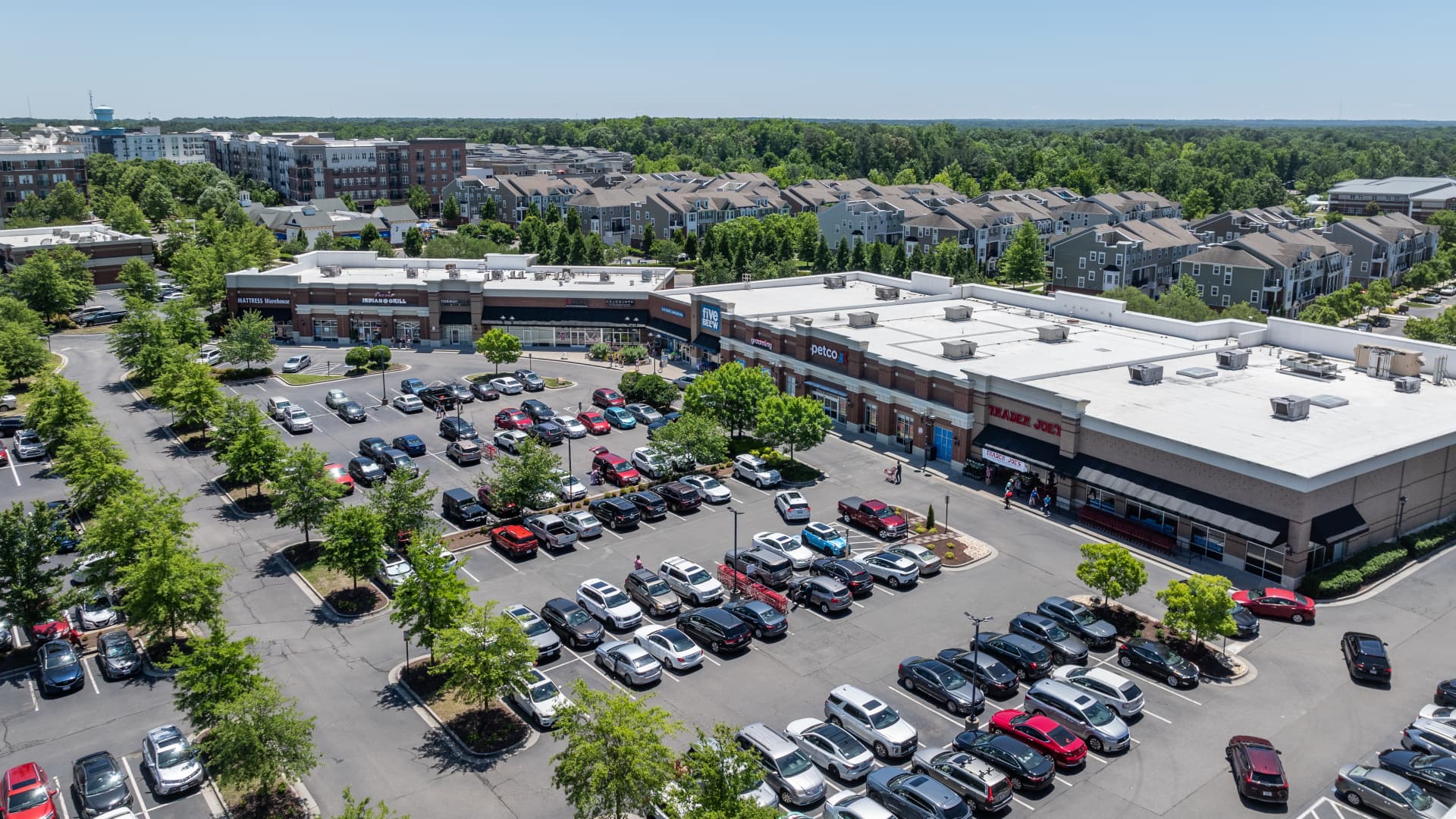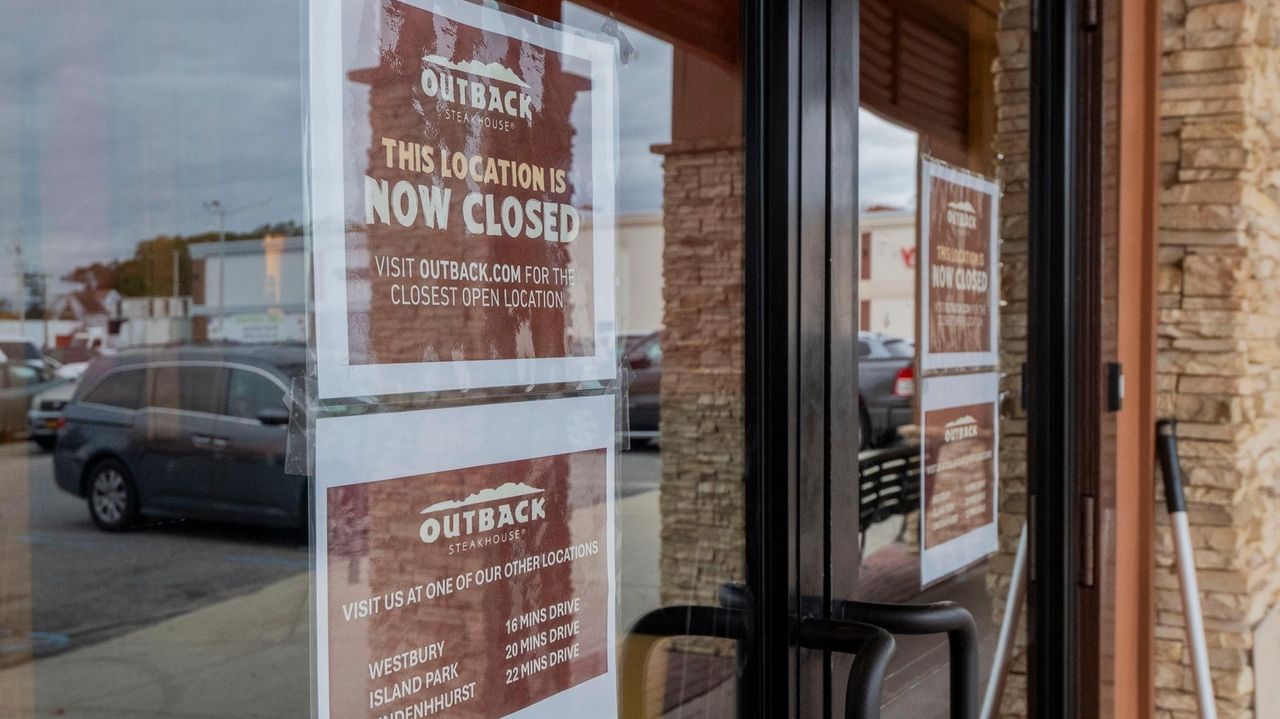An open-air strip retail center in Richmond, Virginia.
Courtesy of Nuveen
A version of this article first appeared in the CNBC Property Play newsletter with Diana Olick. Property Play covers new and evolving opportunities for the real estate investor, from individuals to venture capitalists, private equity funds, family offices, institutional investors and large public companies. Sign up to receive future editions, straight to your inbox.
It would be an understatement to say that retail real estate has had a rough ride. It started with the birth of e-commerce and escalated with the Covid-19 pandemic. Its recovery has been splintered, given the varying subsectors of retail, from large indoor malls to big-box centers to grocery-anchored, open-air strip centers.
It’s that last subsector that Chad Phillips, global head of Nuveen Real Estate and responsible for over $140 billion of commercial real estate equity and debt investments, says is the big opportunity today.
“We’ve leaned into this resilient, open-air strategy the last two years pretty heavily,” said Phillips.
That’s grocery-anchored centers with, perhaps, a CVS and a pizza place and the like. Vacancy rates in these spaces were 7.8% at the start of 2016, but came down to 4.4% by the beginning of this year, according to data from CoStar Group.
“It survived Covid. It survived the Amazon effect,” Phillips said. “The occupancies within our grocery-anchored, open-air portfolio in good locations is over 95% leased.”
Whenever a tenant closes its doors, Nuveen is able to refill the spot quickly due to such strong demand, Phillips said.
He admitted that retail real estate had been overbuilt for a long time in the U.S. Eventually, developers became more disciplined, especially with the birth of e-commerce. That resulted in a correction that created something of an undersupply today.
“The [capitalization] rates that you can buy them at are fairly attractive,” said Phillips. “So the total returns are good. You’re buying at far less than replacement cost. So you put it all together, and it’s a very resilient, essential real estate need where we can make strong, risk-adjusted returns.”
While larger, indoor mall traffic is rising, especially in the highest-end malls, Phillips said he likes this smaller sector because they’re “bite-sized deals.” You can sell them easily. They’re liquid. Malls are not.
It’s also a factor of simple supply and demand. Roughly 15 years ago, allocations to retail were over 30% for real estate investors, but that dropped to 10% because the returns were weak, according to Nuveen. Now, in just the last 12 months, the returns are improving, and investors are looking again.
“I wouldn’t say they’re flooding back, but we’ve raised year-to-date [for] convenience-based retail $1.4 billion of equity with leverage,” Phillips said. “That puts us over $2.5 billion of buying power for these types of strategies. So yeah, I do think that investors are turning their heads.”
This is not to say that the sector, like any other, is not without risk. After a few years of outperformance, it’s starting to slow down.
“After five years of consistent demand and rent growth, fundamentals are softening,” wrote Brandon Svec, national director of U.S. retail analytics at CoStar Group in a recent company newsletter, noting vacancy rates in grocery-anchored, open-air spaces have ticked up for three consecutive quarters. (Though they’re still near historic lows.)
But Svec added that the broader retail leasing environment tells a different story.
“With little new retail space expected to be added over the next few years, and availability conditions sitting near historically tight levels, retailers are staying active in their pursuit of new locations,” Svec said.
He also said there’s concern about the state of the overall economy, consumer confidence and consumer spending.
After strong rent growth in previous years for the grocery-anchored, open-air subsector, it has stalled this year, with annual rent growth the weakest in more than a decade. This is a clear departure from prior years, Svec emphasized.
Phillips said that’s why the strategy requires that investors be particularly picky about the properties.
Consumer confidence ebbs and flows, and that has an impact on whether they’re going to go to these centers for coffee or to get a manicure. The existing customer base, namely those with higher savings rates who can withstand higher unemployment, are vital to choosing where to invest.
Phillips said an average household income of over $100,000 and a largely millennial, well-educated population are among the criteria he looks for.
Competition among investors is rising, but not to the point where good deals can’t get done, he said, citing low, double-digit returns.
He added low levels of new construction are helping to keep vacancies down, and the spaces draw consistent crowds.
“I do think it’s a lot about convenience and being in the path of that convenience, and that’s where we want to invest,” said Phillips.
First Appeared on
Source link













